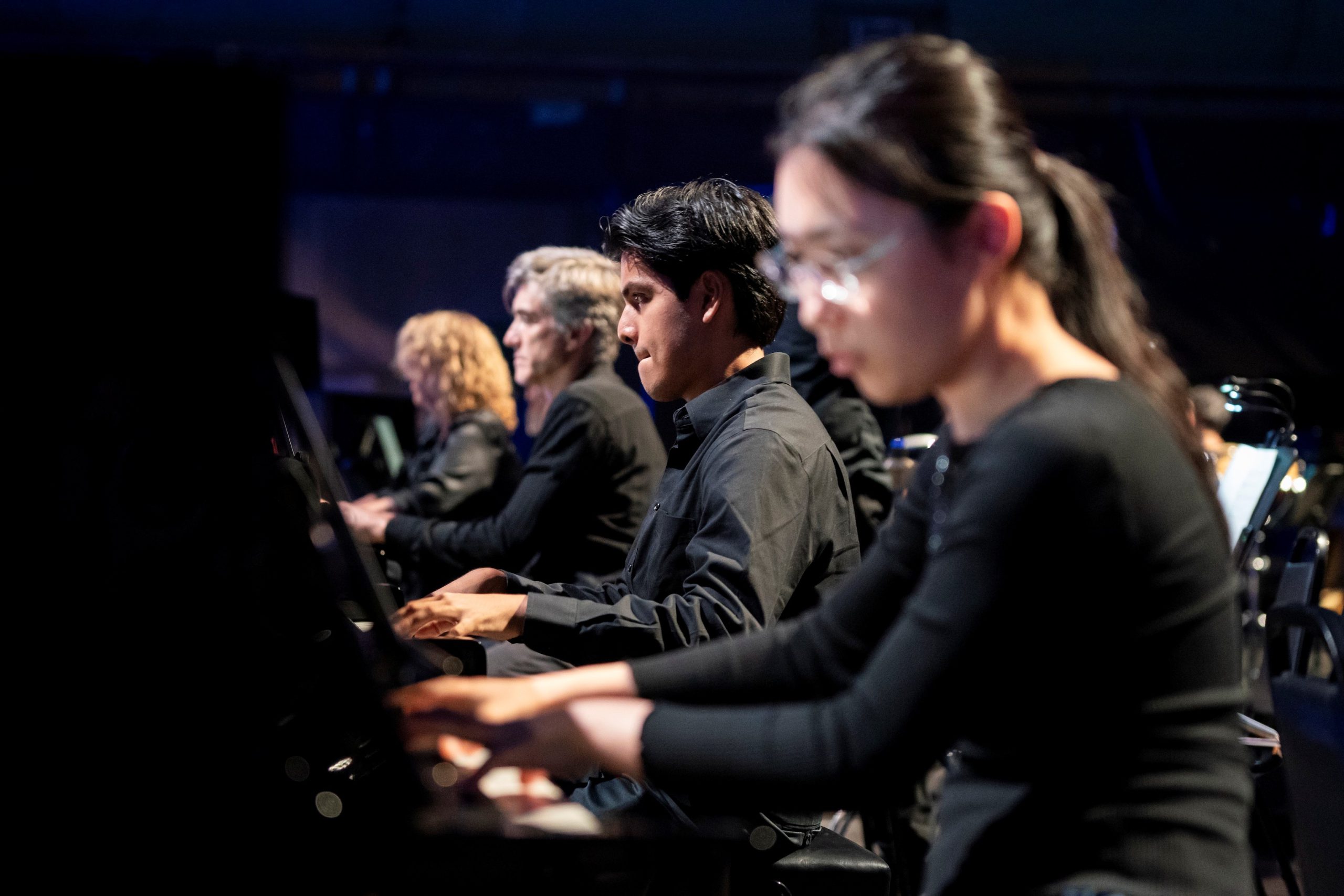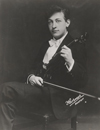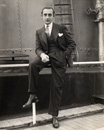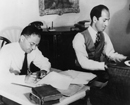Reviews
50 Pianos, 11,000 Strings: An Armory Spectacular
The Park Avenue Armory’s Drill Hall has long been home to avant-garde spectaculars. A 2008 production of Bernd Zimmerman’s Die Soldaten propelled the audience around on railroad tracks; a 2016 staging of Louis Andriessen's De Materie featured a bleating, malodorous herd of a hundred sheep. The tradition continued on September 30, with the North American premiere of Georg Friedrich Haas’s fascinating 11,000 Strings (2020).
The 65-minute piece is an epic presentation. It employs 50 pianos, supplemented by 25 instrumentalists. (The work’s title tots up the 220 strings in a typical piano and multiplies by 50.) The Armory production arranges the pianists along the periphery of the Drill Hall, surrounding the audience in the center, all seated outward and facing the nearest bank of players. Between every two pianos sits one of the instrumentalists—strings, brass, winds and percussion, along with a harp, a cembalo, a celeste, and an accordion. As the composer elucidates in a marvelously informative program note, the tuning of pianos has been infinitesimally adjusted, so that the fifth between one piano’s C and the G on the next piano corresponds to a violin’s perfect intonation: a difference of a hundredth of a tone from usual tuning. The pattern continues down the line, consequently making the 50th piano in the circle a full semitone higher than the first one.

In the Armory's Drill Hall: The audience is seated in the middle of the circle of 50 pianos
11,000 Strings uses no electronic sound, but (as Haas explains) the instrumentalists echo the notes from nearby pianos, thus “amplify[ing] them like loudspeakers.” Adopting a term from the French-Romanian composer Hora?iu Radulescu, Haas labels the piece “plasmatic music,” its “high-density” texture the result of “the simultaneity of many closely spaced pitches.” The result, in its complexity, “can only be reproduced electronically to a limited extent.”
Still, at the opening-night performance, the strangeness of the result made the piece sound like no other acoustic music. It was as if the huge Drill Hall’s reverberation, combined with the instrumentalists’ echo effects, had “processed” the sonic image. Moreover, the sound washing over us from the other side of the hall was markedly different from that in front of us, made diffuse by the capacious acoustic. In essence, no two sections of the audience heard the same piece.
The work’s Ravel-ian opening passage, hovering around C major, was taken by the instrumentalists alone, giving it the air of an introduction in a classical concerto, the expository business creating anticipation for the soloist’s first statement. When the pianos entered, they did so quietly; only as they proceeded could you single out their singular characteristics in their amalgamated sound.

Keyboardists perform Georg Friedrich Haas's 11,000 Strings
The “plasma” soon manifested itself as a thrumming, heaving sonic mass. At various times it evoked torrential rain, or the dull roar inside an airplane cabin, or small waves lapping near the shoreline. At one point, it resembled some huge, ill-tuned, old-timey saloon piano: You half expected the ensemble to burst into “The Sidewalks of New York.” At midpoint, a ceremonial gesture brought a new, organ- sounding texture, as if a Wurlitzer were introducing the second half of a double-bill.
Even though 11,000 Strings is a piece of abstract music, with no subject other than itself, in performance it left a narrative-like impression: Haas and his musicians seemed to be telling a story. Although the structure may not have been immediately apprehensible, it was evident that an ineffable musical logic was holding the whole thing together. Even the “plasma’s” passages of cacophony—there were more that a few––were clearly suffused with strands of the preceding material.
It helped that the pianists had in front of them, along with iPads displaying their parts, synchronized smartphones marking the piece’s timing. Whether or not we were supposed to notice them, the phones told us from moment to moment where we stood in the course of events. As the piece approached its end, the music acquired a character not exactly of recapitulation (although we were tangibly hearing previously stated ideas), but of resolution. We had come to a domain that we were able to understand because Haas and company had made the approach so thoroughly discernible.
The work proved continually intriguing, often quite beautiful, and overwhelming in its impact. No recording could do it justice: the Armory deserves our gratitude for letting New York hear it as it was intended to be heard.
11,000 Strings runs at the Armory through October 7.
Photo by Stephanie Berger





 FEATURED JOBS
FEATURED JOBS

 RENT A PHOTO
RENT A PHOTO


